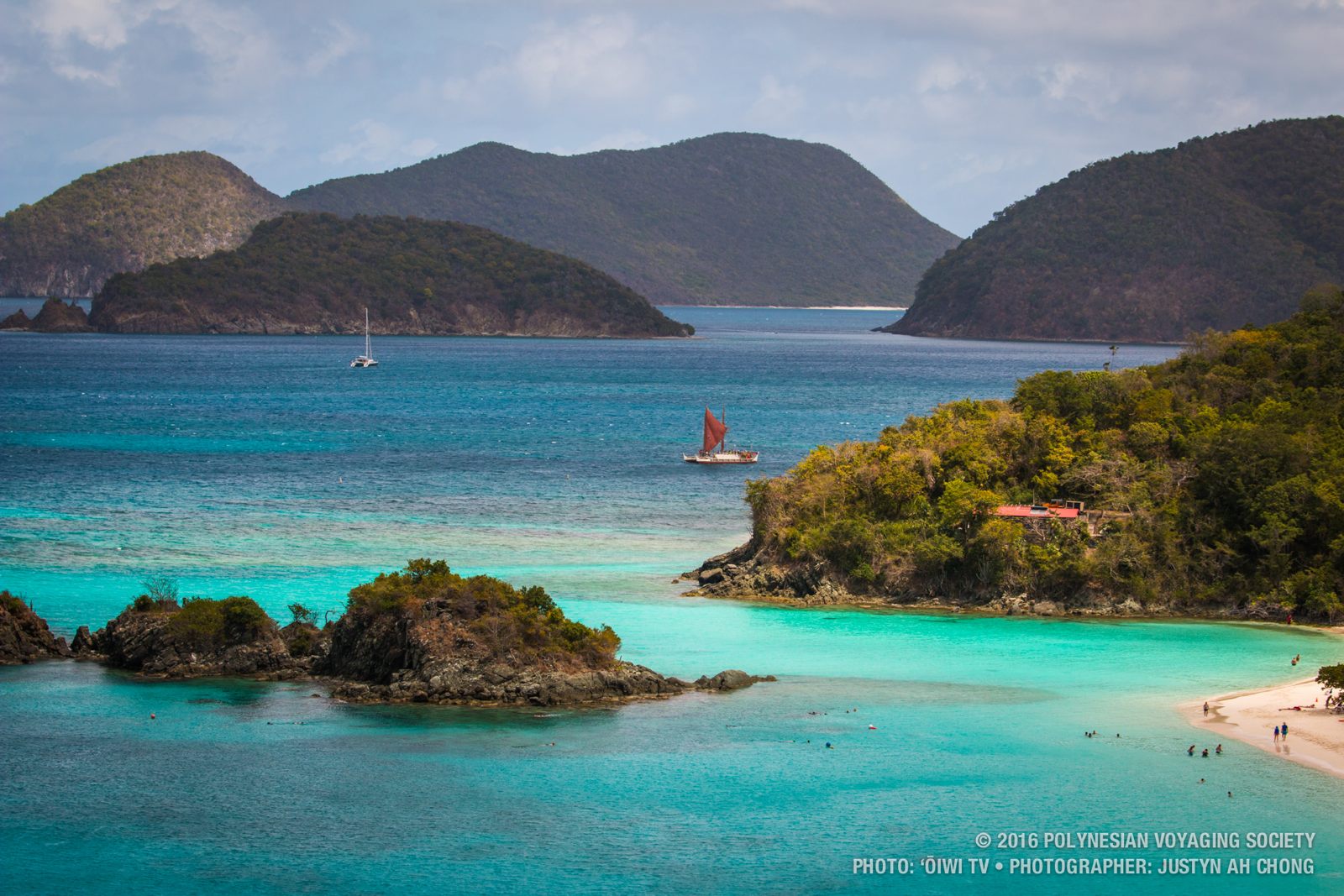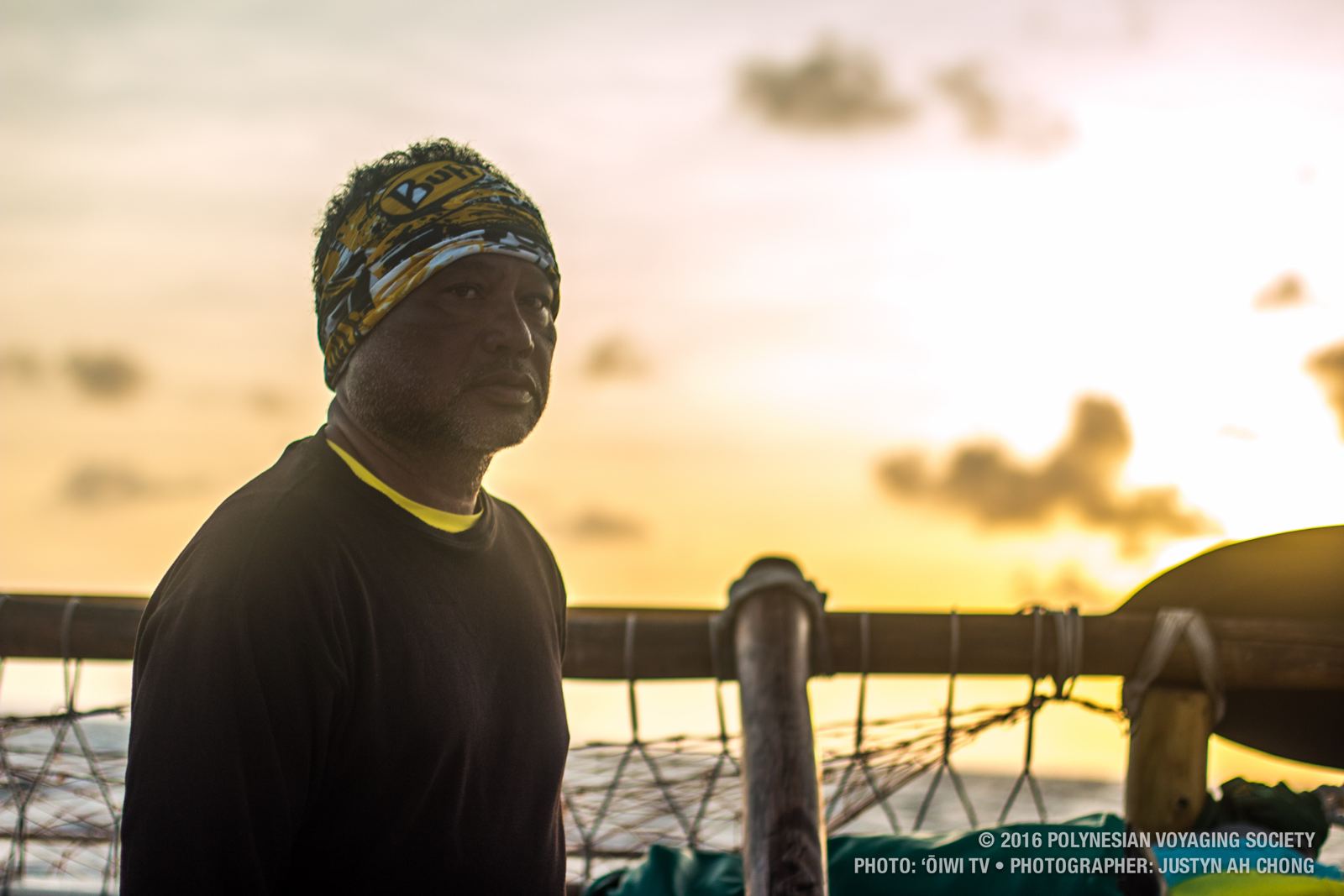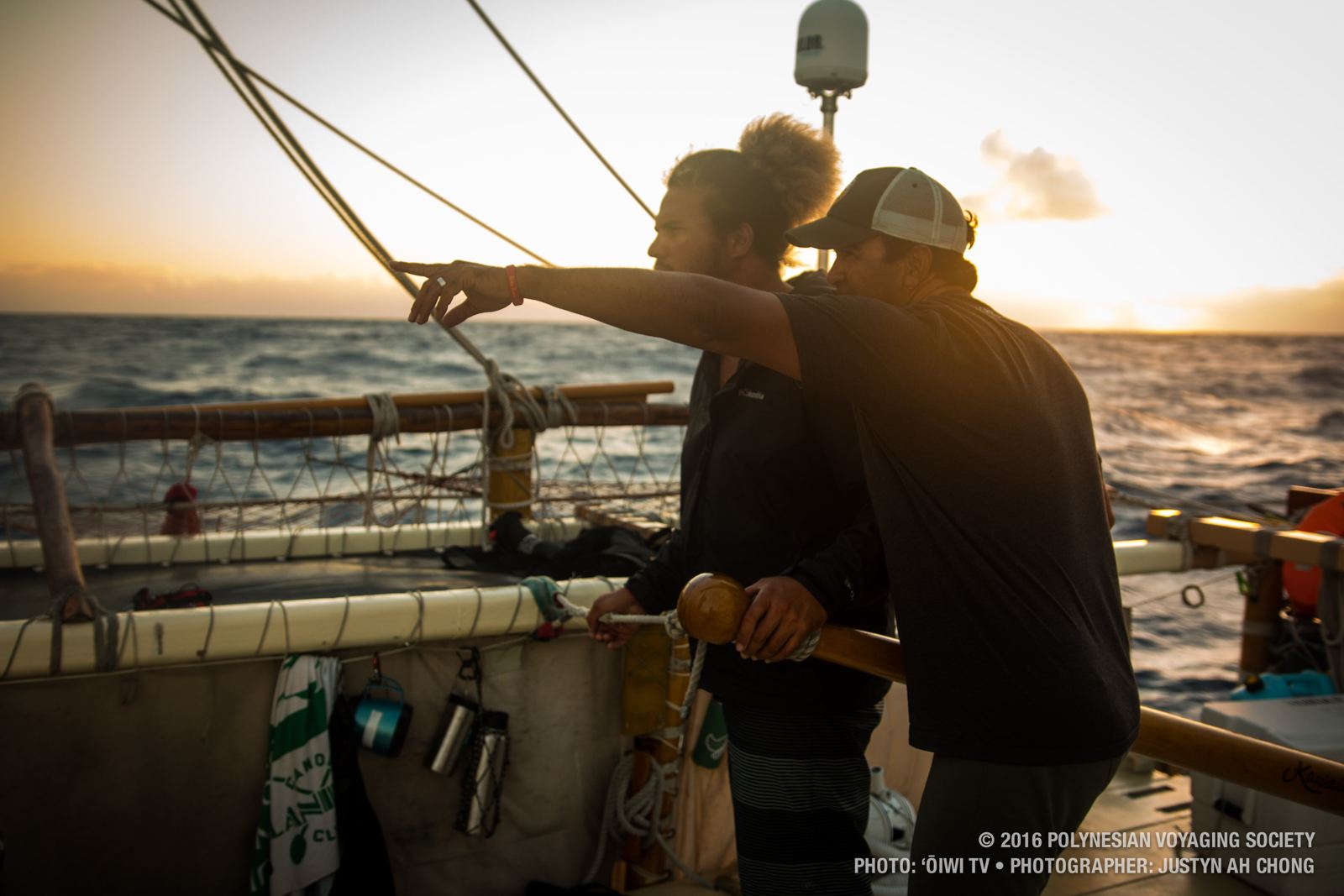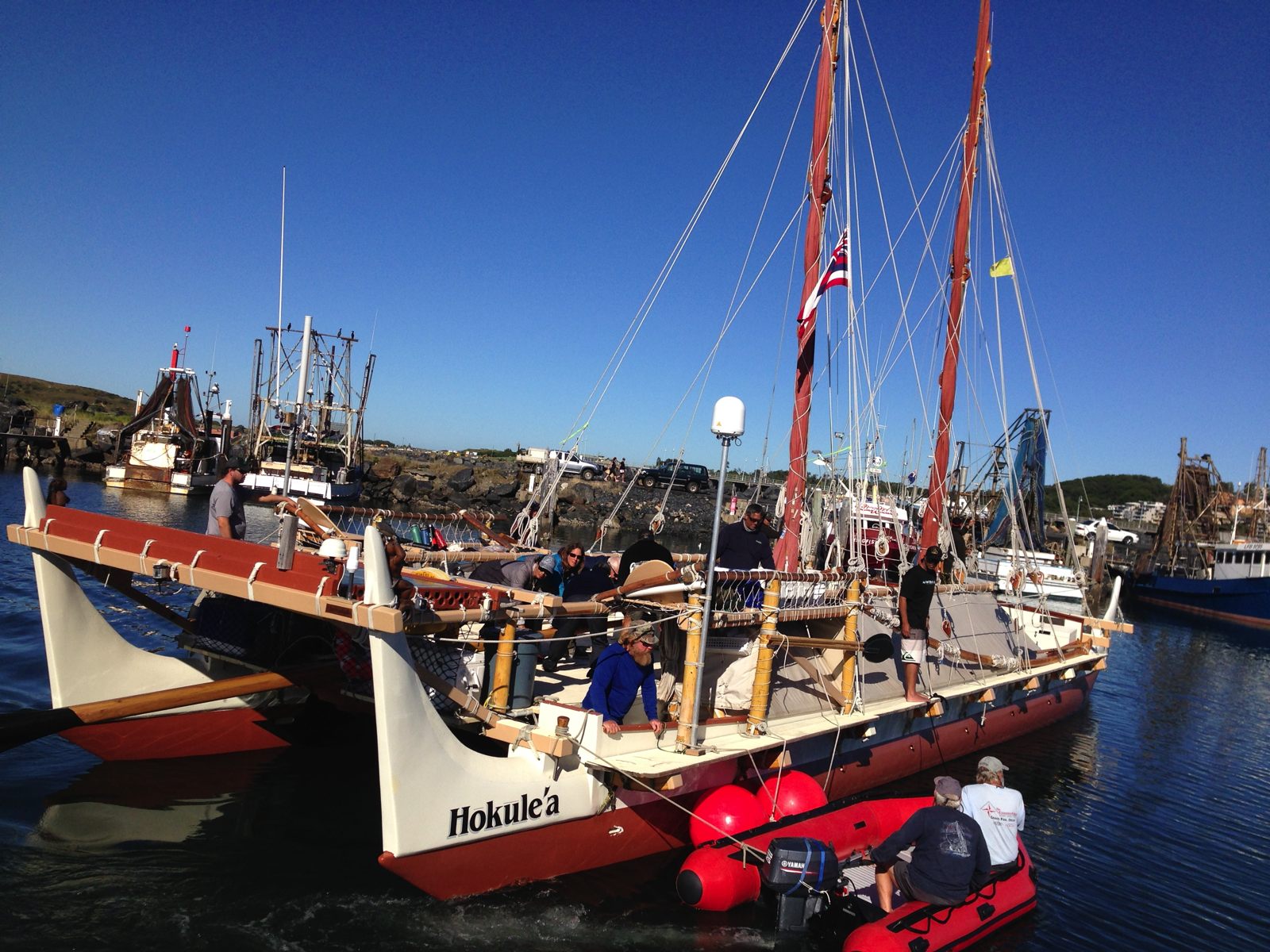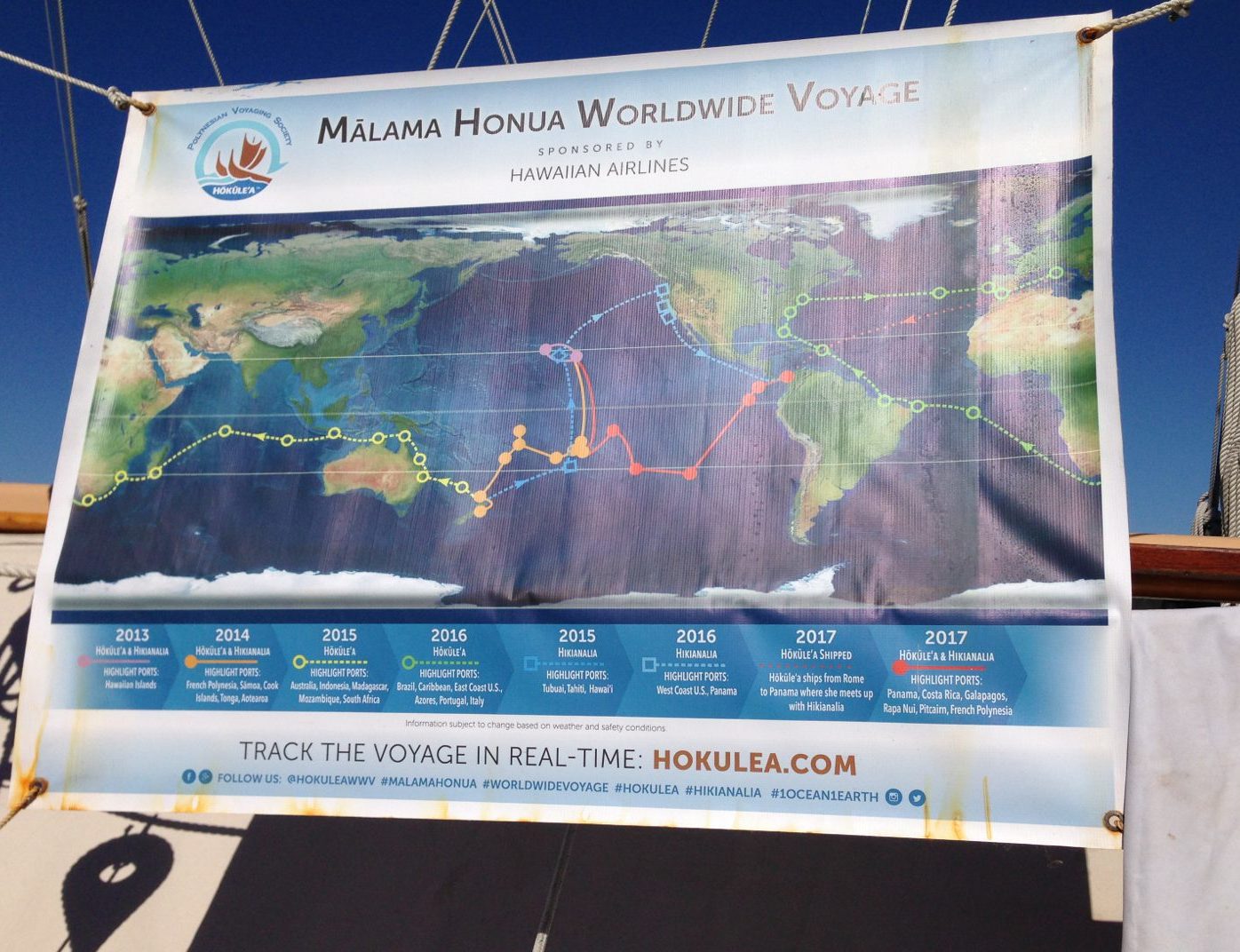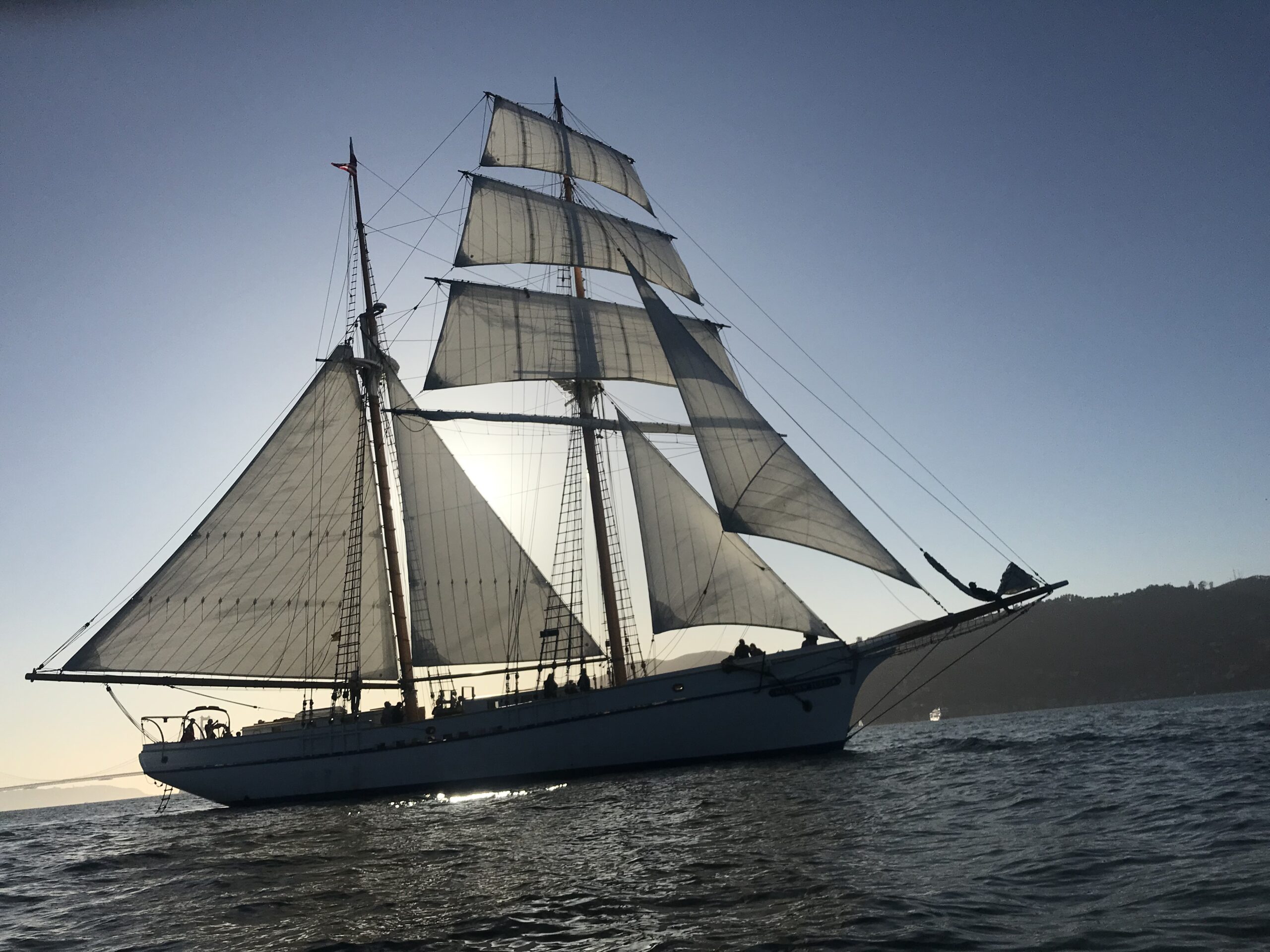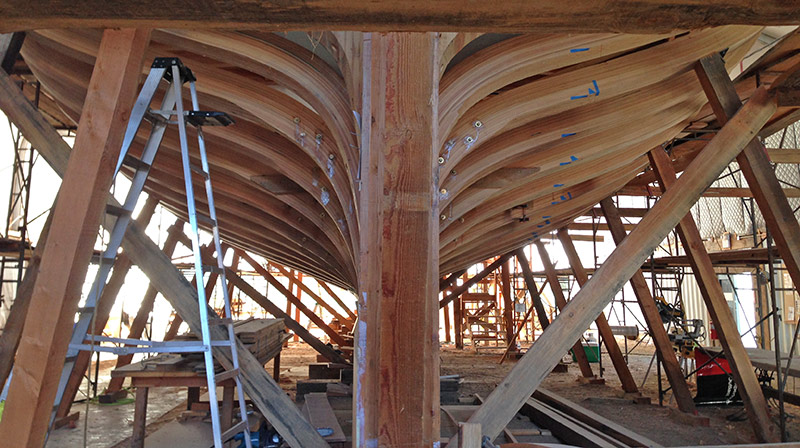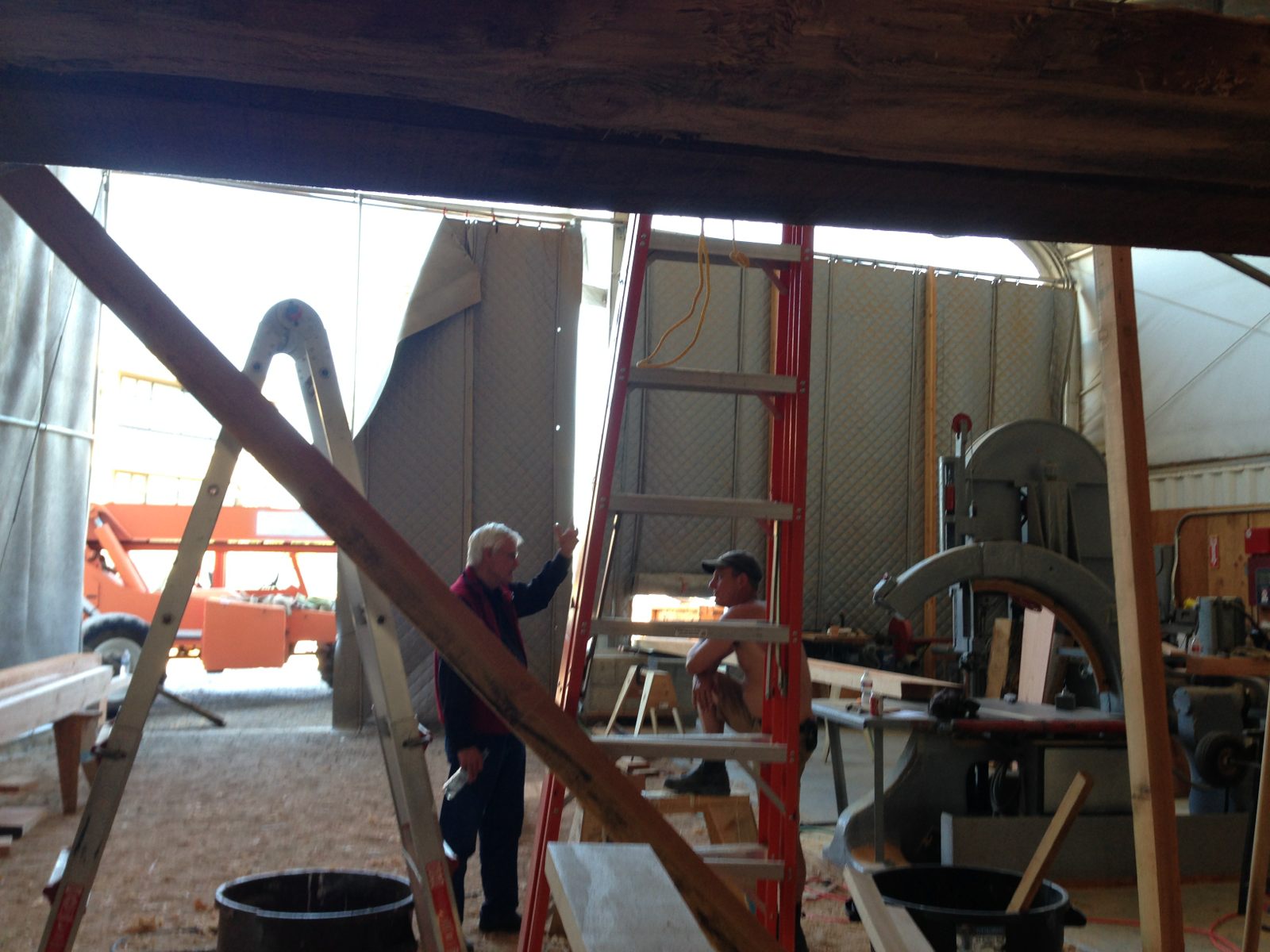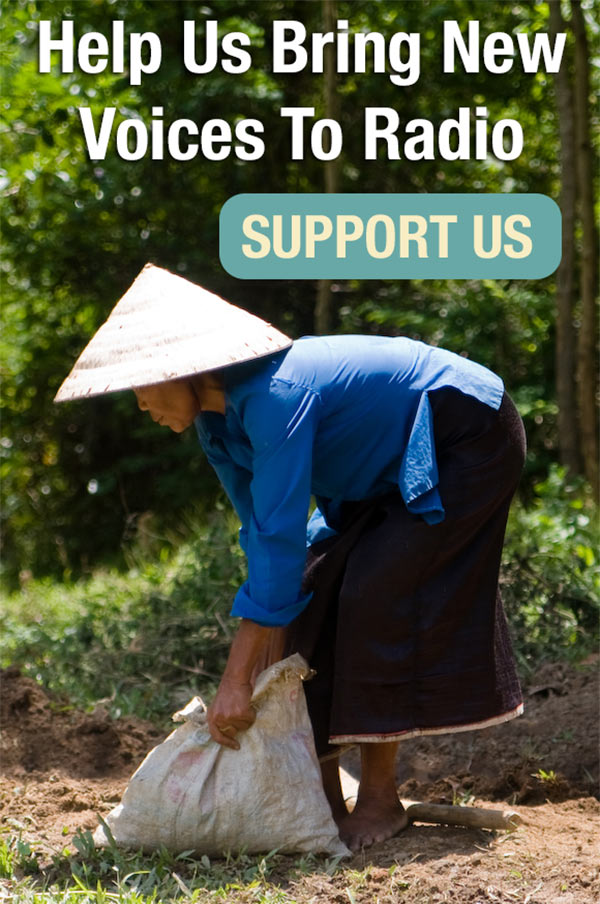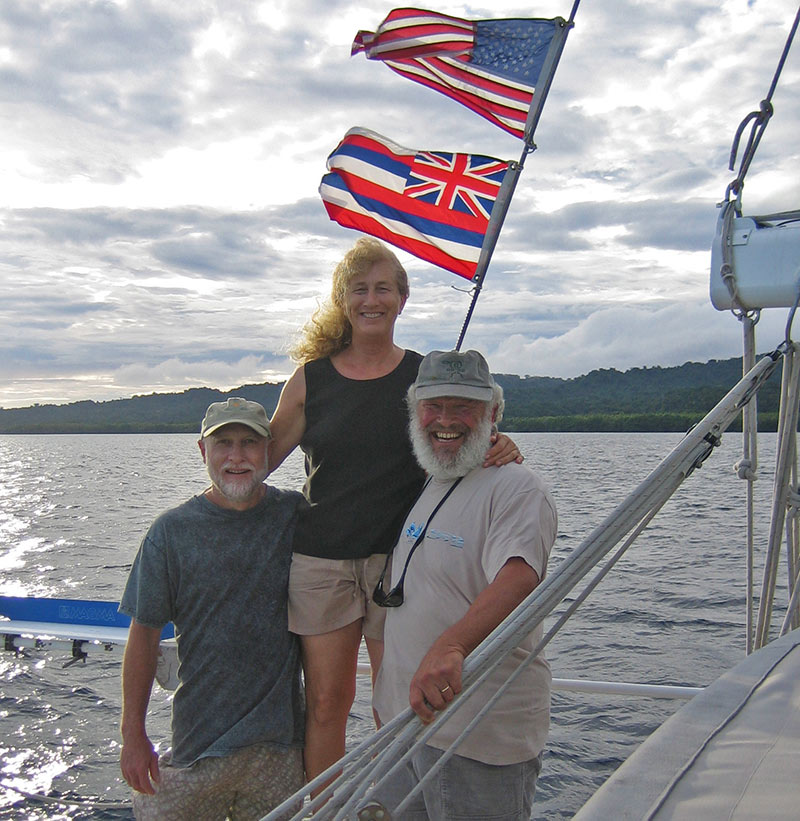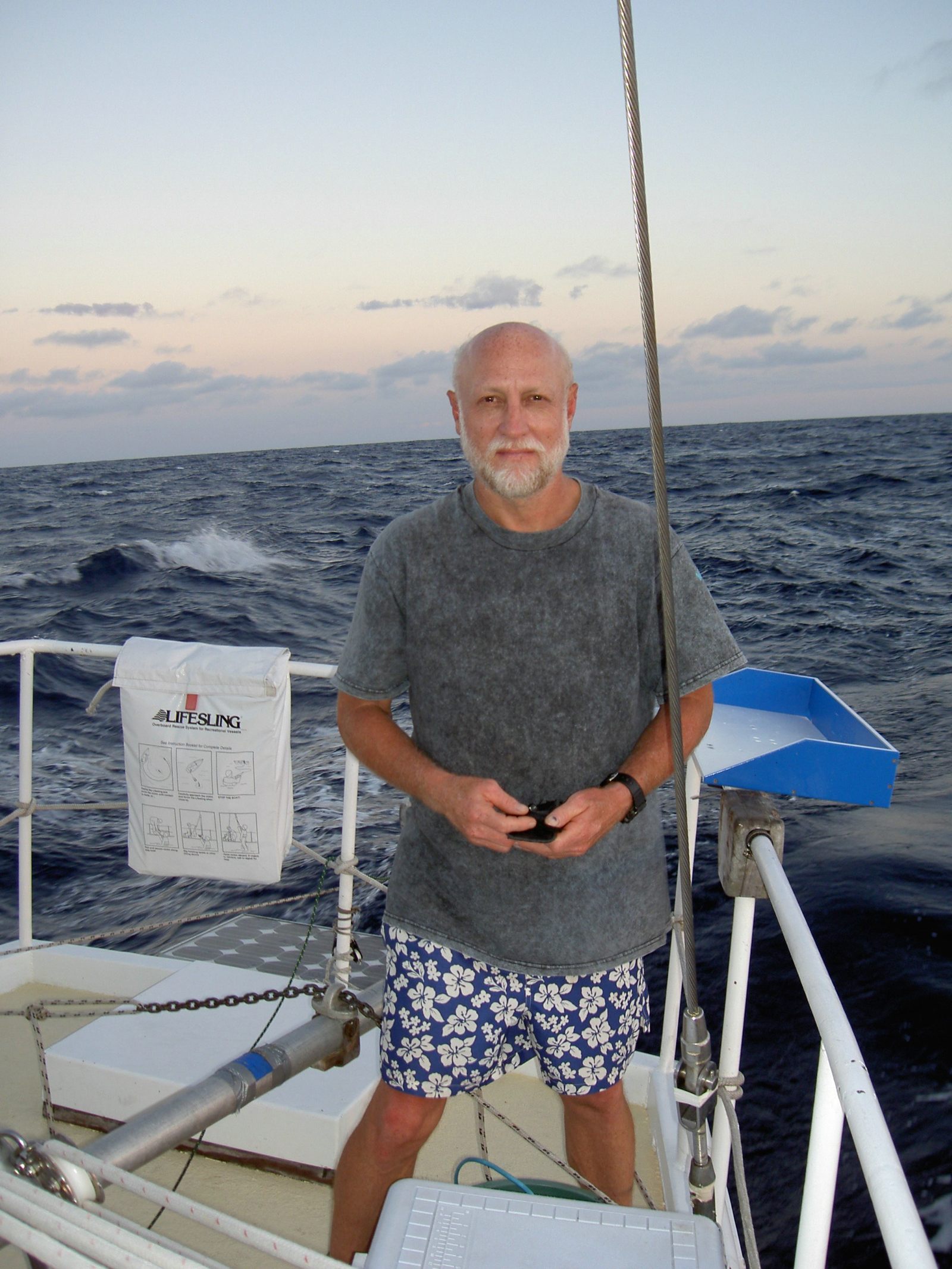Blue Water Cowboys
The Pacific Ocean“Blue Water” sailing is the kind where there’s no land to be seen, hopefully for days or weeks on end.
It’s not an easy life but it’s a deeply rich one. The ratio of lives lost at sea to the quantity of poetry and music composed by the people who live there is impossible to calculate. Incredibly, in this day and age of instant connectivity of all kinds, there is still a way to fall off the edge of the human world, and that’s the provenance of the Blue Water Cowboys. These women and men inspire us, push us beyond our edge into adventure, and also help us get to where we want to go.
Outer Voices is honored to present to you Blue Water Cowboys – three radio pieces presented against a backdrop of the images, words and sounds of the lives of a tight knit family of sailors who we’ve been lucky enough to know, and to sail with.
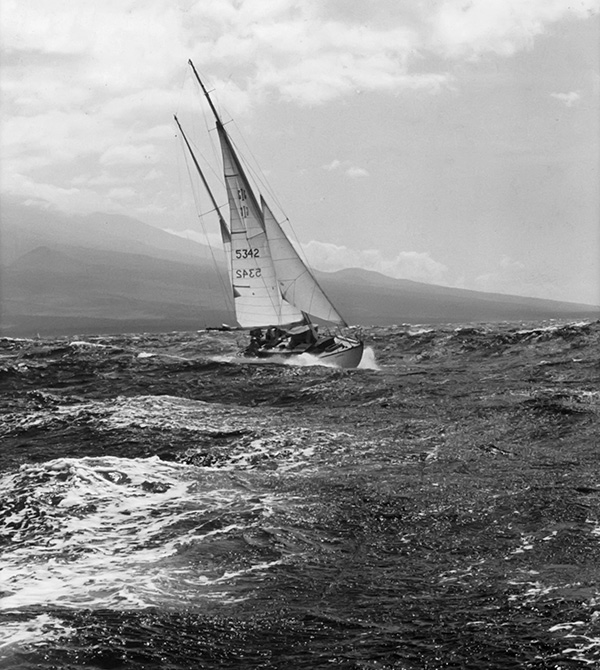
The Whole Story
Read about Pacific island sailors. View photo galleries and listen to recorded interviews from the crews of the Hokule’a, Blue Water Marine, Goodewind, SV Kwai, Gershon II, and The Matthew Turner.
Blue Water Cowboys
LISTEN (23 MINUTES)
Click to download audio as: MP3
The nation of Kiribati is a comprised almost entirely of water, with small pieces of land barely an interruption to the powerful wash of the equatorial currents and the trade winds that blow through them. One group of Kiribati islands, called the Line Islands, lie barely north of the equator and due south of Hawai’i, and that’s where I met up with the SV Kwai. The Kwai is a sailing cargo ship that travels thousands of miles through the Pacific Ocean every year to bring much needed supplies to the people who live in this far flung part of the world. Line Islanders get double use out of the Kwai, turning the cargo ship into a ferry to get from place to place.
I got on board with them at Christmas Island, sleeping on the deck with them between Christmas, Fanning and Washington islands. After the passengers were gone, I stayed on board for the long journey home to Honolulu. While on board, I had my microphone on as much as possible, though it wasn’t always possible.
The crew of the Kwai and the people of the Line Islands are defined by the shape of the sea – a tough shell protects a gentleness not far underneath. The lives of passengers and crew are intertwined with each other, and with the elements of sea and sky that they share – something common to so many people I know who live their lives, by fate or by design, on the open ocean.
These islanders, this crew, and all the people like them, these are the Blue Water Cowboys.
Blue Water Cowboys is the at the center of three radio pieces about them, and the ocean that weaves them together.
Featured On
- Earshot (ABC Australia)
Credits
Producer: Stephanie Guyer-Stevens
Supervising Producer: Claudia Taranto
Sound Engineers: Judy Rapley and John Biewen
Script Consultants: John Biewen and Cathy Fitzgerald
You heard the voices of the SV Kwai crew: Nacaniel Polania, Teibitoa Rubeniti, Arina Tembeu, Tebaueti Tetabo, Ben Vroom, and Captain Evy. Music performed by the crew of the SV Kwai and recorded on board at the dock in Honolulu. You also heard the voice of Kaleo Wong, navigator of the sailing canoe Hokule’a.
Many thanks to boat owners April Fountain and Brad Ives for their generous hospitality and to Captain Bruce Blankenfed of the Hokule’a. Gratitude also to Kaeti Boanareke, Bruno Delala, and the people of the Line Islands of the nation of Kiribati for their kindness.
Major underwriting for Blue Water Cowboys was provided by Terry Causey.
Around the World in One Canoe
The guys sailing the Hokule’a back then were renegades, but also serious Hawaiian watermen. They lacked the traditional knowledge themselves to guide the canoe, but that didn’t stop them. One man, traditional navigator Mau Pilaug, from Micronesia, agreed to help them get to Tahiti using only traditional navigational techniques – wind, stars and waves, and the elements around them – to make the 1500 mile voyage. They did it, and the legacy began, and still continues.
Hokule’a is now a treasured icon of Hawaiian pride and independence. She’s two thirds of the way through a worldwide voyage, called Malama Honua, which means the health of the planet.
We were lucky enough to intercept her in Australia, when I was there in the spring of 2015. I recorded a conversation about traditional navigation with their navigator, Kaleo Wong, on that visit. You’ll hear him on Blue Water Cowboys. Luck was on my side once again when the Hokule’a visited here, on the island of St. John in the US Virgin islands. Around the World in One Canoe is a piece I reported for NPR on her arrival here.
Building the Matthew Turner
LISTEN (16 MINUTES)
Click to download audio as: MP3
What does it take to build a sailing ship? Wood, nails, but maybe in even larger measure, a love for the sea, trust in the wind to carry it, and a longing for a place that’s not on solid ground. The Matthew Turner was for many years an idea of a ship, a dream of a boat, that one man, Alan Olson, had. His idea was a tall ship, where young people from the San Francisco bay area could feel the feeling of being at sea, away from land and maybe closer to themselves and to the wild. He dedicated the boat to Matthew Turner, the last of the great California boat builders. Hundreds of other people worked over many years to make this dream a reality. I stepped into a slice of time in the process of the work of building the Matthew Turner. We wanted to feel the verb, the motion and emotion behind this massive project, so we traveled to Sausalito to hear for ourselves.
Credits
Producer: Stephanie Guyer-Stevens
Script Consultants: John Biewen and Julia Barton, and the participants in Center for Documentary Studies’ Making it Sing 2018 workshop
Music: 33 Bowls, by 33bowls.com
Building the Matthew Turner was first boadcast on KWMR.
Many thanks to Alan Olson, the volunteers and staff of Call of the Sea.
For more information about the Matthew Turner, visit CallOfTheSea.org
Major underwriting for Building the Matthew Turner was provided by Terry Causey
The Blue Water Archives
TOPICS: Environmental Sustainability.

